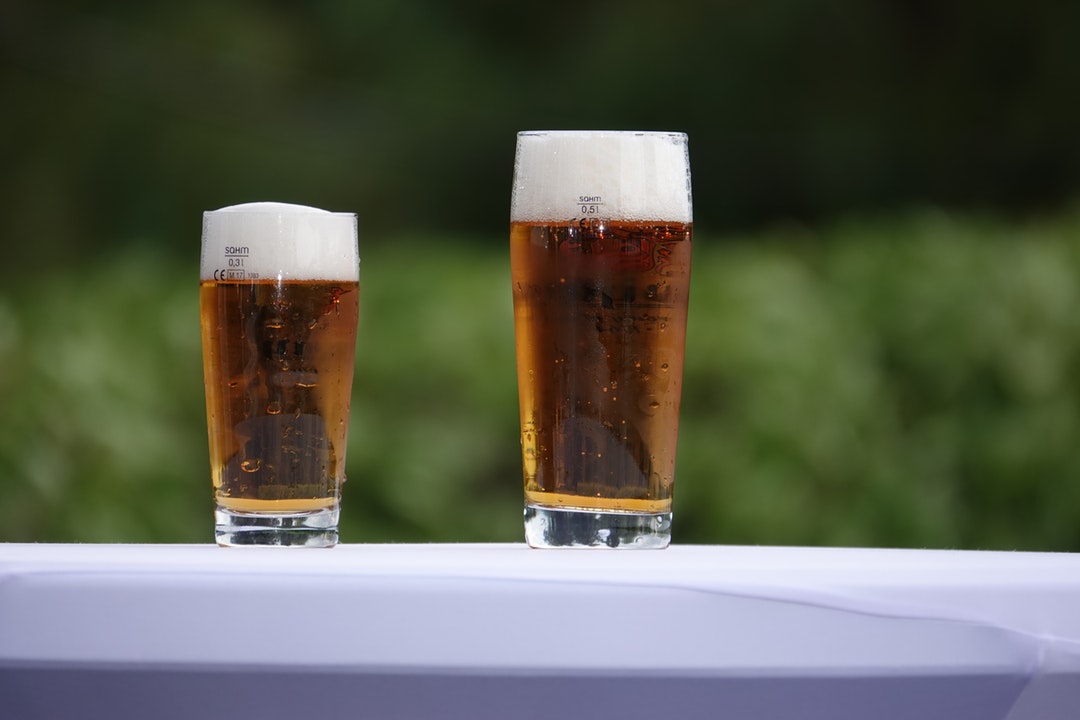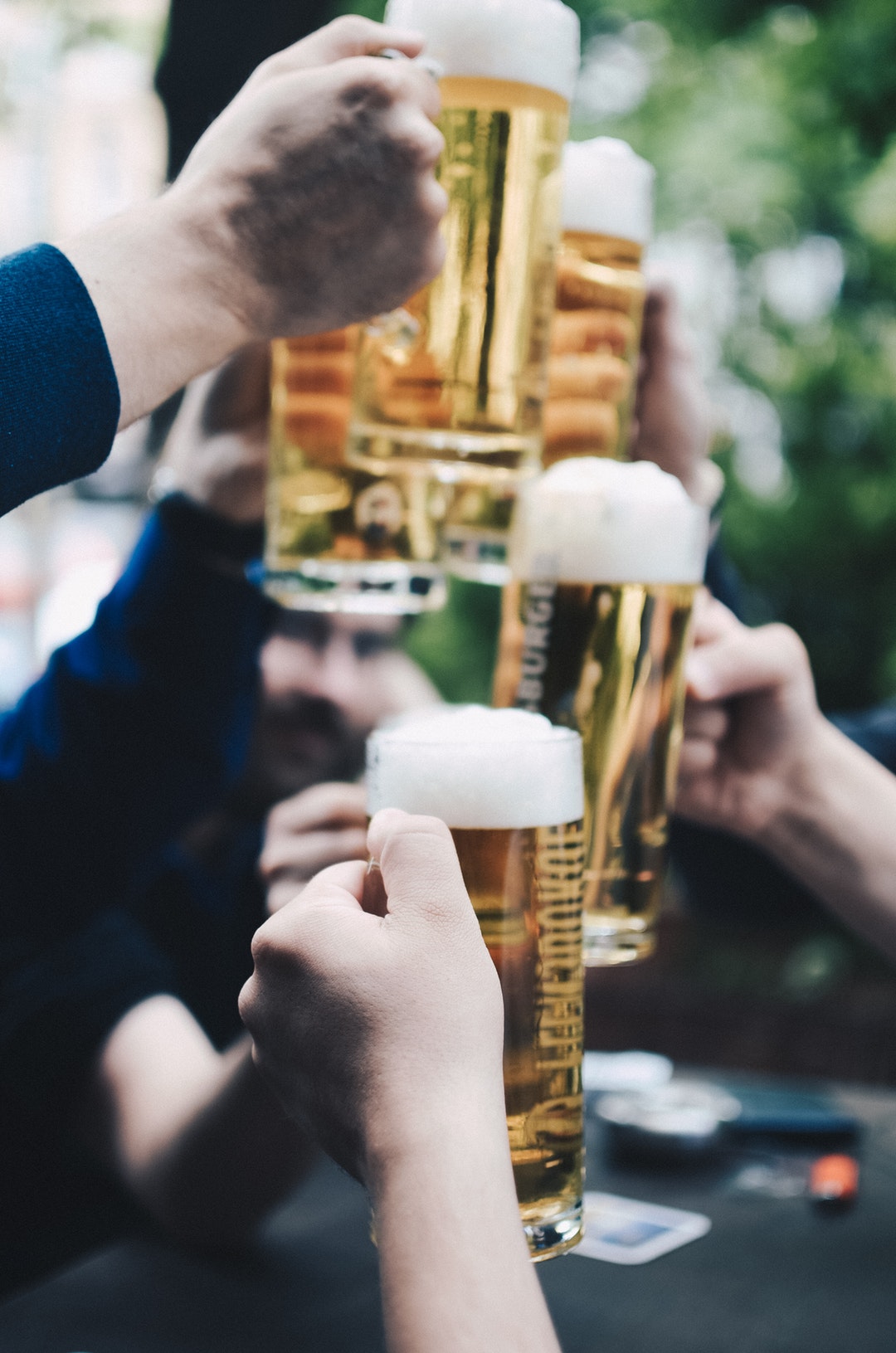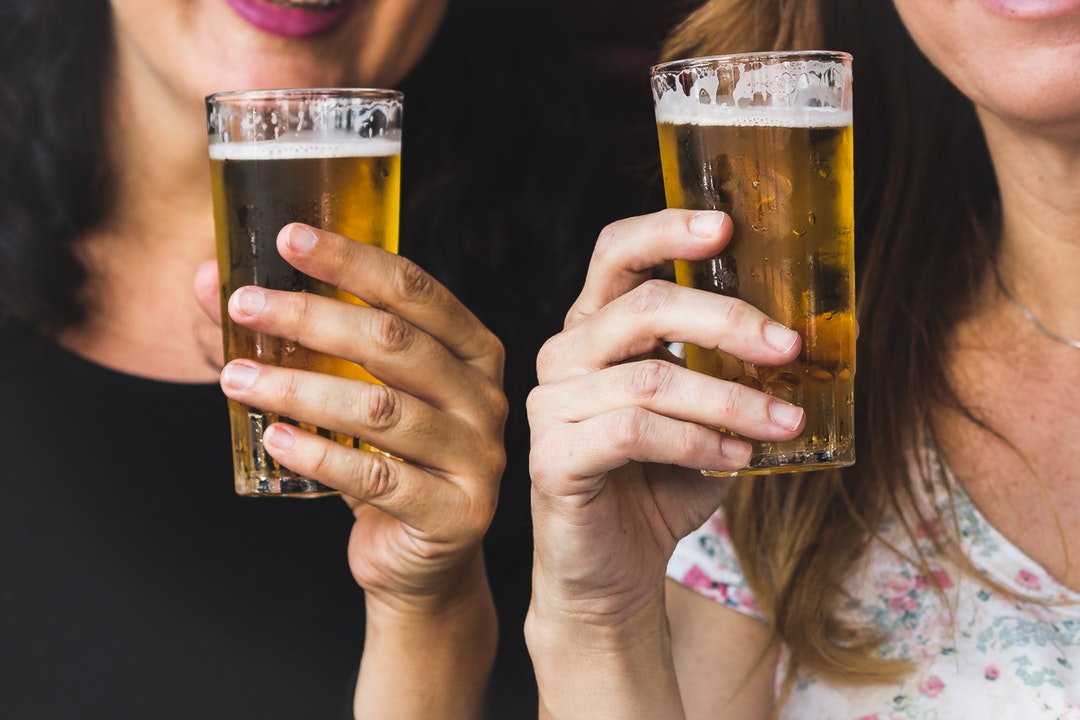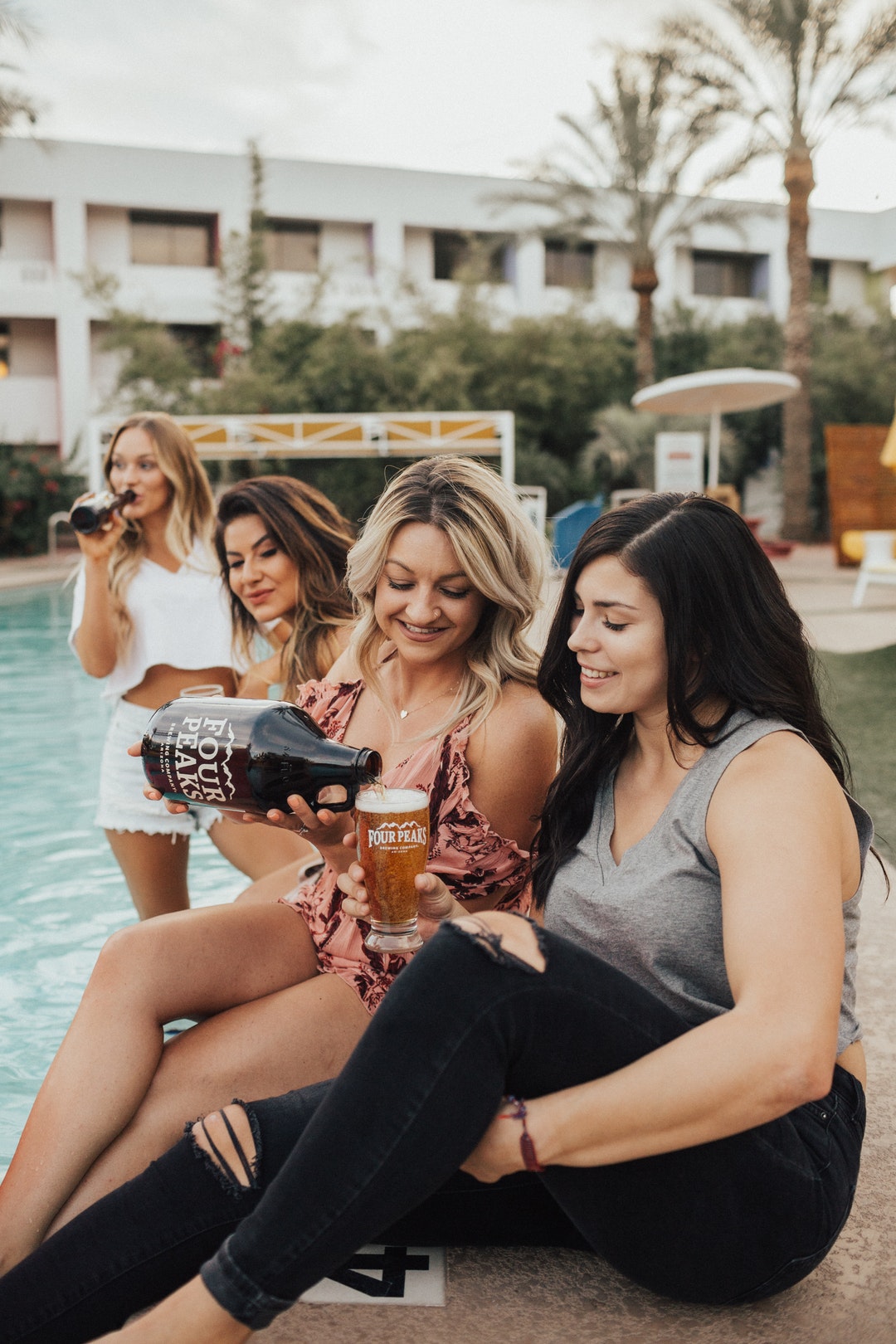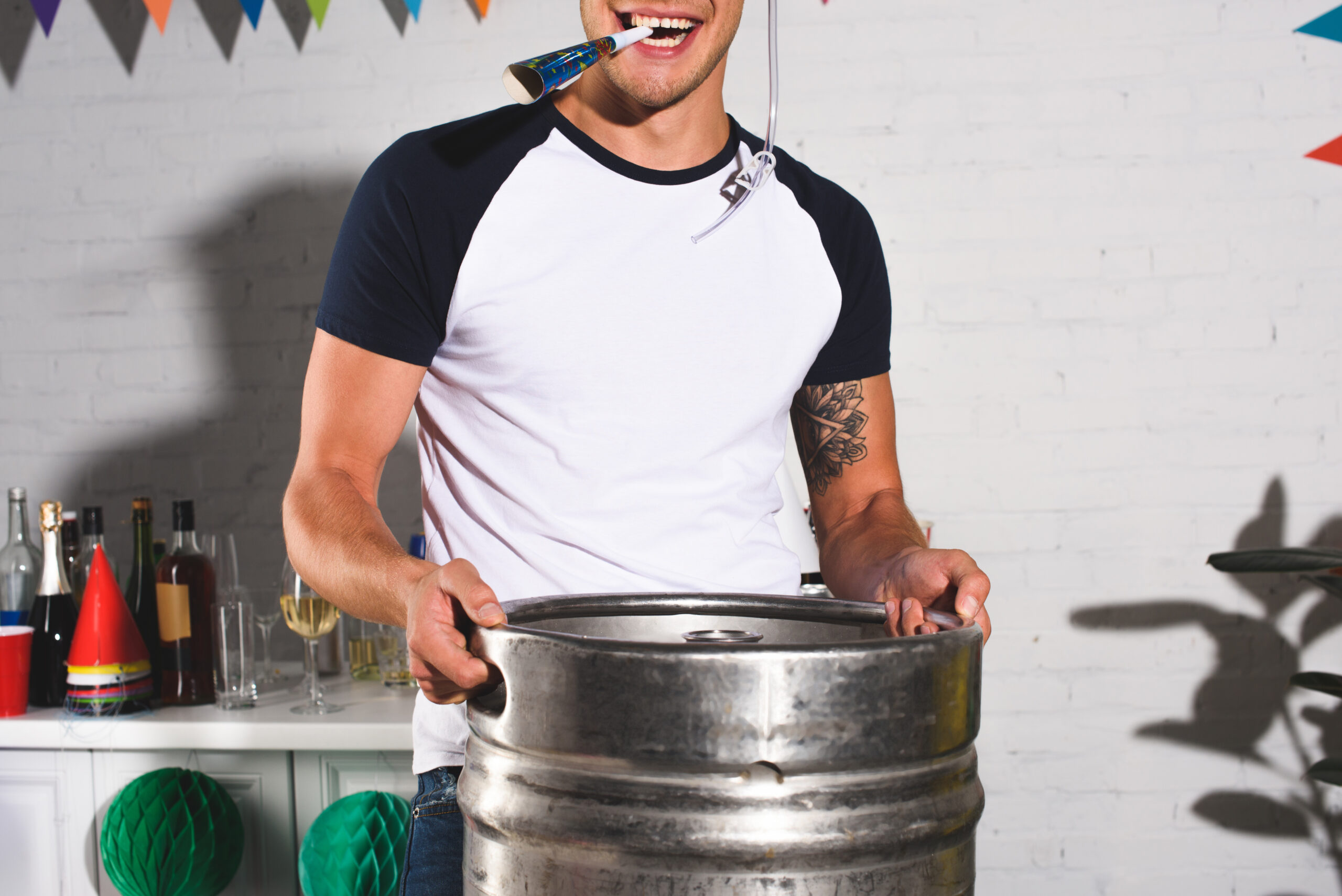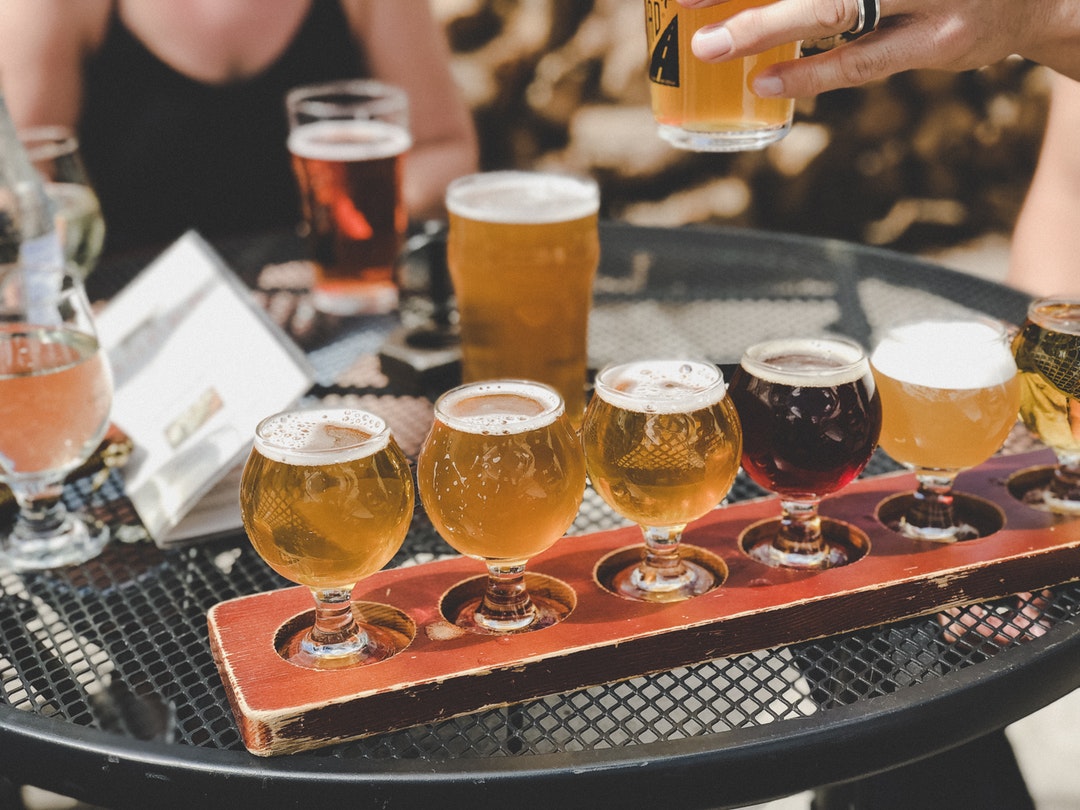Beer is extremely trendy. Consider the fact that over 7000 craft breweries operated in the United States in 2018. Recent projections show an additional 1000 breweries should open in 2019.
Once you have tapped into the craft beer world (pun intended), you’ll start to hear phrases like “appropriate glassware” and “#properglassware“. Although the idea of serving beer in the right glass has become more popular thanks to the craft beer industry, it is not a new concept.
Brewers and bartenders have been perfecting the art of the beer glass for decades. There is a long history behind making the right glassware choices for each type of beer.
What is the appropriate type of glass for each kind of beer? There’s an art (and perhaps also a science) to choosing the right glass for each beer type.
Looking to learn more? Check out this guide to beer glasses. You don’t want to be that guy serving everything in a pint glass…
The 2 Most Common Types of Beer Glasses
Here are the top two most common shapes of beer glasses that you are likely already familiar with. This section of the guide will explain each shape, size, and why you may want to avoid serving your beer in it.
1. The Pint Glass
The pint glass is likely the most well-known shape of beer glass. It’s the go-to for lazy bartenders and uneducated beer drinkers.
The shape makes it cheap to manufacture, easy to clean, and simple to stack behind the bar. It’s the most common type of glass you will see, hands-down, in your local watering hole and all your friends’ homes.
The American pint glass, also known as a Shaker glass, is a cylindrical glass with straight walls. The diameter of the glass increases slightly as you move up from the bottom of the glass to the rim of the glass. A pint glass holds sixteen ounces of beer.
The nonic, also called the English pint or Imperial pint, is a 20-ounce alternative to the American pint glass. It is roughly the same shape, however, it has a thicker lip at the rim.
It also has a bump-out near the top of the glass. This bump-out is designed for beer with a heavier foam head.
Most common types of beer served in a pint glass include:
- Ales
- Lagers
- Porters
- Stouts
Please, choose a pint glass as your last option.
The thickness of the glass warms the beer too quickly, and the wide-mouth shape of the glass loses the aroma more quickly than other glasses. Do your beer a favor and avoid the pint glass altogether.
2. The Stein or Mug
Everyone loves a good sloshing cheers at Oktoberfest. The stein or mug is ideal for this type of clinking.
A mug is likely the second most common beer glass you’ll find at your friends’ homes. A mug has a wide, cylindrical shape with a handle. The mug is made from thick glass.
Some mugs are shorter and have dimpled sides, like the German seidel. Others are taller and have smooth sides.
The handle of the mug is the defining characteristic of this glass type. It is supposed to keep the warmth of your hand from warming the beer too fast.
A stein is a similar handled-shape. However, a stein has a hinged cover. This design dates back to the 16th century belief that covered drinks prevented the spread of the bubonic plague.
A stein was traditionally made from stone, silver, ceramic, or pewter. It is rarely used to serve beer in a bar setting these days, but has become a great souvenir item.
Most common types of beer served in a mug or stein include:
- Lagers
- Dunkles
- Ales
- Pilsners
Although mugs and steins are fun (think: Renaissance fair with a turkey leg in one hand and a stein in the other), there are better options to showcase the flavors of your beer.
If you do choose to go with a mug, avoid a frosted mug at all costs. The cold of the frosted glass can numb your taste buds, which results in a less flavorful experience. The ice crystals also create a lot of foam, ruin carbonation of the beer, and kill the aroma.
Choosing the Glass Based on the Beer
Instead of going with the common shapes, try choosing your beer glass based on the type of beer you will be drinking out of it. This section of the guide is broken up by beer type rather than glass type.
Scroll down to your favorite beer to see if you’re drinking it from the right receptacle.
1. Pilsners (and Other Lagers)
A pilsner is a golden beer with a bracing bitterness. The hops make for a clean, refreshing crispness. A pilsner is a very specific type of lager.
A lager is defined by its low and slow bottom-fermentation (as opposed to an ale, which is top-fermented). They are very easy to drink.
Lagers should be served in a lager glass, which is a shorter, wider flute glass. A pilsner should go in a pilsner glass, which was designed specifically for the beer. A pilsner glass is a taller, more slender version of the lager glass.
Both a lager and pilsner glass hold just under 16 ounces. The fluted shape resembles a trumpet. It is more slender at the bottom than the mouth. These glasses were designed to show off the beautiful, gold color of the beer and create a fluffy foam head.
2. Hefeweizens
The German hefeweizen should be served in a vase. A vase is defined by its tall shape with a bulbous top section and curved lip. The rounded section at the top of the glass retains the aroma better than other glasses.
The curved lip helps trap a thick, foam head.
As you take a sip from a vase, you stick your nose into the bulbous section of the cup and are met with the banana and clove smell that defines the hefeweizen style. This glass is all about capturing the best aroma for your beer.
A couple of other styles of beer that should be served in a hefeweizen glass include:
- Dunkelweizen, a darker version of a hefeweizen
- Dunkel, a dark lager
3. IPAs
The official glass for India Pale Ales (IPAs) was released in 2013. The top half of the IPA glass resembles a white wine glass. The bottom half is a conical, hollow stem.
The walls of the bottom half are ridged. This means that as you tip the glass back for a sip, the beer is passed over several ridges that agitate the beer and release the citrus aroma. The shape of the top half of the glass captures that aroma and directs it into your nose as you sip.
Finding an official IPA glass at most bars is still a little difficult. When you can’t find an IPA glass, your next best bet is a tulip glass.
A tulip glass is a short, stemmed-glass. The shape resembles a tulip flower. A tulip glass is arguably the most versatile glass. This glass is designed to capture the aroma of more complex beers.
4. Stouts
In 2014, a stout glass was created that has, over the last five years, become the only way to properly serve a stout. It is strikingly similar to an IPA glass in shape but serves a different function.
A stout glass has that same, very unique, shape as an IPA glass. The top half still resembles a white wine glass. The bottom half is still a conical, hollow stem, about half as wide as the top.
The difference between an IPA and stout glass is the walls of the bottom half. In an IPA glass, the walls on the bottom half are ridged. In a stout glass, the walls are smooth.
The shape of the glass recreates a pour from a tap with each sip. This makes it a perfect glass for a nitro stout. You’ll get fresh creaminess each time you tip the glass back for a sip.
5. Sours
When picking a glass for a sour beer, you want something that retains the head but also captures the aromas.
A goblet is probably the best choice for a sour. Goblets are one of the larger, more extravagant types of glassware. Unlike a pint glass, that holds 16 ounces of beer, a goblet can come in a variety of sizes.
Goblets, sometimes called chalices, have a long thick stem and a bowl-like glass. They are designed for head retention and have a wide mouth for easy sipping.
A snifter is another great choice for drinking a sour in smaller quantities. If you’ve ever been served cognac or brandy, it came in a snifter. The shape of the snifter makes for great beer swirling.
6. Barleywines
For a beer as big as a barleywine, you need a snifter. For the same reason a snifter is the ideal choice for brown spirits, it’s the ideal choice for this boozy, barrel-aged beer.
Barleywines tend to be very alcoholic, and have many complex flavors. The short stem on a snifter allows your hand heat to warm the beer slowly. The warmth helps release aromas from the heavy brew.
Like with sours, the snifter allows you to swirl the barleywine to release the complex flavors from the dense beer.
When in Doubt, Go with the Tulip…
Tulip glasses, and their derivatives – the thistle and Teku glasses – are the most versatile glasses available. They tend to enhance any kind of beer served in them.
A tulip glass is a stemmed glass, named after the flower that it resembles. It has a tulip-shaped bowl with a protruding lip at the top. The lip helps maintain the foam head of the beer.
The glass has a smaller stem and footer than other stemmed beer glasses. The bowl is large enough to allow for good beer swirling. This helps release the full flavor and aroma of your beer.
The tulip glass is commonly used for stronger brews, such as Double IPAs, Belgian ales, and barleywines.
Or Maybe A Thistle…
A thistle glass is a form of a tulip glass. It was specifically designed for Scotch Ales. The thistle glass is an elongated version of the tulip.
The thistle glass, named after the national flower of Scotland, has the same stumpy stem, with a bulb-like bowl. It is taller than the tulip and more angular.
Or a Teku…
A Teku glass is another form of a tulip glass. This glass is more angular, but with the same stem and lip as a traditional tulip glass.
Some argue that the Teku is the most versatile beer glass on the market. Like all types of tulip glasses, it enhances aroma, flavor, and mouth-feel of your beer. Plus, it’s a beautiful glass to look at.
Regardless of what type of beer you love to drink, consider the tulip, thistle or Teku as an alternative glass for your drinking.
The shape and size make it a great substitute for any of the other glasses listed in the guide. If you are only going to purchase one type of beer glass, go for the tulip glass.
Enjoy that Craft Beer In the Right Glass
Next time your bartender asks if you’d like your beer in a glass, say yes! And don’t be afraid to request something other than a pint glass at the bar. Your beer will thank you.
This guide is not all encompassing, but it does hit on the most common types of beers and beer glasses. Now that you know the differences between beer glasses, get out there and enjoy your brews to the fullest. If nothing else, at least you know you have better options than a pint glass.
You will be doing your future beer-drinking-experience a favor by drinking your craft beers out of the right glassware.
Did this article help you decide on the proper glassware for your beer? Looking for more great information on how to be drinking the best-quality beer at home?
Check out this article on home beer taps or visit our website to learn more about QuikTap.

